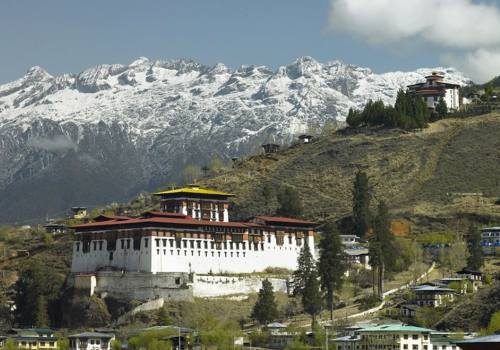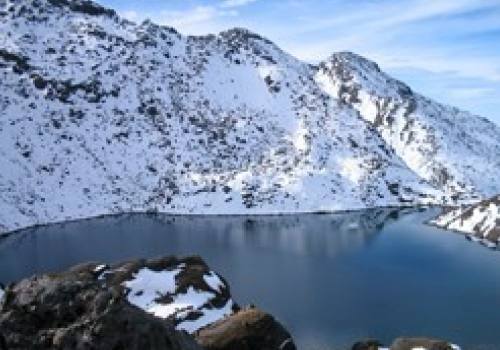About Nepal
Nepal is a landlocked country located between India and the Tibetan Autonomous Region of China. It is home to Mount Everest (29031.7 ft; 8,848.86 mt), the tallest mountain in the world. Along its southern border, Nepal has a strip of level land that is partly forested and partly cultivated. The Kathmandu Valley, which is comprised of three great mini-kingdoms - Kathmandu, Patan, and Bhaktapur - is where the Himalaya's most sophisticated urban cultures took shape, featuring a world-class artistic and architectural heritage.
The first civilizations in Nepal, which flourished around the 6th century B.C., were confined to the fertile Kathmandu Valley, where the present-day capital of the same name is located. It was in this region that Prince Siddhartha Gautama was born in 563 B.C. Gautama achieved enlightenment as Buddha and spawned Buddhism.
Nepal's rulers' early patronage of Buddhism largely gave way to Hinduism around the 12th century, reflecting the increased influence of India. Although the successive dynasties of the Gopalas, the Kiratis, and the Licchavis expanded their rule, it was not until the reign of the Malla kings from 1200-1769 that Nepal assumed the approximate dimensions of the modern state.
The kingdom of Nepal was unified in 1768 by King Prithvi Narayan Shah, who had fled India following the Moghul conquests of the subcontinent. Under Shah and his successors, Nepal's borders expanded as far west as Kashmir and as far east as Sikkim (now part of India). A commercial treaty was signed with Britain in 1792, and again in 1816 after more than a year of hostilities with the British East India Company.
Here are some facts about Nepal, a four-season destination:
- Capital: Kathmandu
- Official Language Spoken: Nepali
- Location: Southern Asia (between India and China)
- Total Area: 147,181 Sq. Km
- Bordering Countries: India (1,690 km), China (1,236 km)
- Time Difference: +5.45 hrs Greenwich Mean Time
- National Animal: Cow
- National Bird: Danphe
- National Flower: Rhododendron (Gurans in Nepali)
- Administrative Division: 7 Province
-
Nepal is home to 8 of the world's 14 highest peaks, including Mount Everest (8,848.86 meters), which are all above eight thousand meters.
Nepal is the only country with an altitude variation that ranges from 70 meters to 8,848.86 meters.
Nepal boasts the highest lake on earth, Tilicho (4800 meters), the deepest gorge (Kaligandaki at 1200 meters), the highest valley (Arun Valley), and the tallest grassland in Chitwan.
Nepal has over 360 species of orchids, which constitute over 2% of the world's orchids.
Nepal is home to 8% of the total species of birds found in the world, with 870 recorded species.
Nepal has over 650 species of butterflies, which account for 4.2% of the world's total butterflies.
Nepal has 2.4% of the world's total flowering plants, with over 250 species found only in Nepal.
Nepal is the birthplace of Lord Gautam Buddha and his birth palce Lumbini is listed as World Heritage Site.
Nepal is the only country in the world with a rectangular flag.
Nepal is also home to the Living Goddess Kumari (Virgin Goddess).
Nepal has more World Heritage Sites than any other country. The Kathmandu Valley alone has 7 World Heritage Cultural sites within a radius of 15 kilometers, earning it the nickname "Living Cultural Museum." Nepal is also known as "Shangrila" or the "Roof of the World."
Nepal is known as the land of festivals.
The capital, Kathmandu, is known as the city of temples.
Over 19% of Nepal's total landmass is protected under National Parks and Protected Areas.
Both Chitwan National Park and Everest National Park are listed as World Heritage Sites.
Nepal is one of the best places for extreme adventure activities such as mountaineering, rafting, canoeing, high altitude marathons, paragliding, kayaking, and mountain biking.
The Himalayas are the third-largest deposit of ice and snow after Antarctica and the Arctic.
Related Articles
Need Help?
Please feel free to contact us. We will get back to you with 1-2 business days. Or just call us now
+977 9851129119 (Laxman)+977 9851071277 (Anjan)
+977 9841311424 (Sudip) [email protected]









